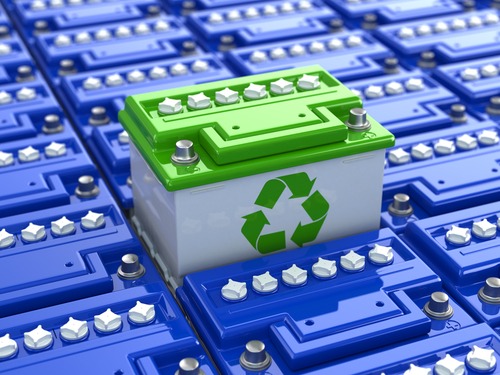Oak Ridge National Lab creates robotic disassembly line for faster, safer battery recycling

While electric vehicles are a move toward cleaner transportation, an outstanding issue remains the question of how best to recycle the battery packs that power them — but now, the Oak Ridge National Laboratory has developed an automated disassembly system for spent batteries.
The advantages of such a system are that it enhances both safety and efficiency in the recycling process, keeping humans further from the toxic portions of the effort. It also allows critical materials to be reused and reduces toxic waste from large lithium-ion batteries, making the whole effort more viable. This could be particularly beneficial since traditionally, only a small percentage of lithium-ion vehicle batteries are actually recycled.
“With our system, when the robot picks up the battery pack and puts it on the production line, it marks the last time a human will touch it until it’s in pieces and parts,” Tim McIntyre, principal investigator in ORNL’s Electrification and Energy Infrastructures Division, said.
The automated system was developed as part of the U.S. Department of Energy’s Critical Materials Institute (CMI). It can be reconfigured to suit any type of battery stack and programmed for numerous tasks: from merely refurbishing battery modules to full deconstruction and materials recovery.
“Automatic disassembly of components containing critical materials not only eliminates labor-intensive manual disassembly but provides for an efficient process to separate the components into higher value streams where the critical materials are concentrated into individual feedstocks for recycle processing,” CMI Director Tom Lograsso said. “This added value is an important part of establishing an economically viable process.”
The use of electric vehicles is only expected to grow in the coming decades. As such, finding viable means of recycling worn components, as well as the cobalt, lithium, metal foils, and other materials used within, will be key to future efficiency. While increased safety is likewise beneficial, perhaps the most major gain such automation provides is the time saved. In the time it takes human workers to disassemble 12 battery stacks, the automated system could manage more than 100, according to ORNL project team member Jonathan Harter.
From here, ORNL hopes to eventually take the process to commercial scale and possibly adapt it to the disassembly of electric vehicle drive trains for recovery of materials such as rare earth magnets, copper, steel, and intact power electronics.
